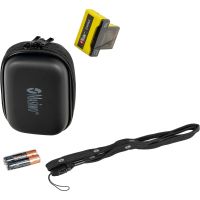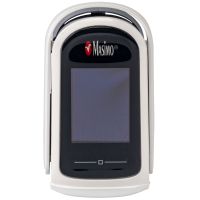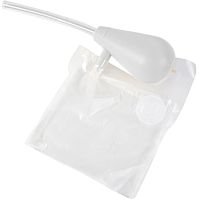Hey everyone. I'm Doc Miles at North American Rescue. Today I am going to be going over some ventilator tips for people that either are not familiar anymore or don't often use ventilators.
Troubleshooting
There's a lot of troubleshooting tips and tricks for your patient if they start getting hypoxic when they're on the ventilator.
Remember, you can always remove the ventilator, unplug it and manually ventilate the patient if you're having trouble with the ventilator, you're not getting the settings right, or there's some kind of concern going on, until you get a new ventilator.
DOPE
A lot of people use the DOPE mnemonic. That's also on the JTS CPG . It's a very handy mnemonic it. You're patient gets hypoxic when they're being ventilated of steps to take to clear any trouble problems. So what does DOPE stand for?
D stands for displacement of the airway tube. So if I start getting hypoxic, D, I'm going to first take a look and I'm going to make sure that my cric is in place, right? So I'm going to check the side of the neck. I'm going to make sure we're not getting any subcutaneous emphysema, I'm going to make sure that it looks like air is going in and out. If I'm ever in doubt, if my airway is patent, what I can do is a few different things.
One, on my cric, I can always take a look in here. I can manually ventilate using my BVM, and then if needed I can confirm with a bougie as well. The other option is I can take that out, and I can redo that cric, get my bougie in. Hopefully beforehand, I can remove that tube, and then I can place a new one on there, confirm, make sure I'm looking good, then I'm in the right spot.
If I have an endotracheal tube, I can do the same thing, so I can confirm that if I've got a video laryngoscope, I can confirm that if not, and if in doubt, I can always place the bougie through it and then I can swap out that endotracheal tube. Place a new one, confirm I'm in the right location, and then start ventilating.
If I do have an endotracheal tube in place, the other option that I have is to go to a cric from that endotracheal tube. If I'm not getting good visualization or if I don't think I'm in the right spot for whatever reason and I'm struggling, I can always convert over to a cric.
O stands for obstructions. So obstructions. I'm going to look for any kind of kinking in the tubing. I'm going to look for any kind of secretions in the tubing, and then I'm going to suction those out. So, along with the equipment that I've shown you in the last post, you want to make sure that you have some kind of suction device, even if it's not a mechanical electric suction. Even if you just have a squid suction, you can hook that to some IV tubing and still clear out an endotracheal tube.
P stands for pressure, and these are situations where they have increased pressure building up in the line. Most of the vents will give you a warning. It's a high pressure warning, and so you can kind of jump right down to the P portion of the DOPE mnemonic and look to see what's causing that increased pressure. As I mentioned before, one of the first things you want to look for with that increasing pressure is a Tension pneumothorax. If the patient develops a Tension pneumothorax, they'll have a very high pressure buildup in the chest because of that external air that's pressing down on the lungs, and therefore, it'll be generating higher and higher levels of pressure. And then we want to look for obstruction, so that'll again be with suction. We can irrigate, so we can put some saline in the endotracheal tube and then irrigate that out. Sometimes that helps break up a mucus plug.
And then finally, patients with circumferential burns around the chest, they can build up a large amount of pressure when you're ventilating them. So if you're getting that high pressure alarm, it's a burn patient, you're confident that it's not a problem in the tube building up pressure or a Tension pneumo, then it's time to start thinking about doing an escharotomy.
E stands for equipment. So equipment, pretty simple to check. We're going to take a look at the ventilator, see if it's failed or if it's still pumping air in and out. Is my O2 tank empty? And then finally, what I'm going to do is I'm going to trace that circuit all the way from the ventilator to the patient to ensure that I don't have any obstructions in there.
Finally, in troubleshooting a ventilator, it's really helpful to have an end tidal C02 monitoring based on the waveform and the pattern that's occurring. You can tell a lot about what's going on with your patient, so really encourage you to educate yourself on end tidal C02 monitoring if you're going to be ventilating patients.










